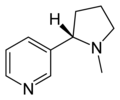New ad for electronic pest control device from Riddex
Riddex has begun a new ad campaign (at least in our area) for their electronic pest control device called the Riddex Plus Digital Pest Repeller (tm). Since we get a lot of questions about these devices I thought it might be a good time to remind readers what the devices do, and don't do. Marketers of electronic pest control devices (sometimes called ultrasonic pest control, or something similar) claim that these devices chase away insect pests and small rodents with electromagnetic and/or ultrasonic energy. They claim that laboratory tests have proven that the product works but they don't cite any actual studies . The only supporting documentation is testimonial. Scientific studies I could not find a single published study in any scientific journal that supports the use of electronic pest control devices for household pests like spiders, cockroaches, or rodents. Such a study would be inexpensive to conduct and could potentially add a great deal of credence to their claims.














